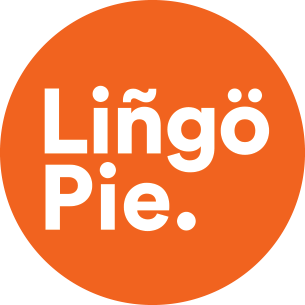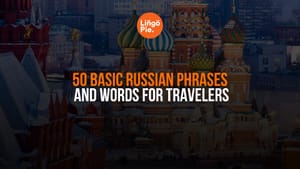When learning a new language, the first step is almost always understanding the alphabet. This is especially true when learning Russian, which uses the Cyrillic script instead of the Latin alphabet that English speakers are familiar with. While some Cyrillic letters may look intimidating at first glance, the Russian alphabet is actually quite logical and consistent once you understand it.
In this comprehensive guide, we’ll explore the Russian alphabet, its history, pronunciation, and practical tips to help you learn Russian quickly and effectively.
- 13 Essential Russian Greetings You Need To Know
- 5 Best Russian Documentaries To Watch To Learn Russian
- 22+ Easy Russian Slang Words For Expats

What Is the Russian Alphabet?
The Russian alphabet uses the Cyrillic script and consists of 33 letters: 21 consonants, 10 vowels, and 2 signs that modify pronunciation. Russians call their alphabet either Алфавит (Alfavit) or more traditionally Азбука (Azbuka), the latter derived from the names of its first two letters: "Az" (А) and "Buki" (Б).
The Cyrillic script is used in over 50 languages across Eastern Europe, the Caucasus, Central Asia, and Northern Asia. Russian is just one of many languages that use this script, alongside Bulgarian, Serbian, Ukrainian, Belarusian, and many others.

History Of The Russian Alphabet
The Cyrillic alphabet has a fascinating history dating back over a thousand years. It was created in the 9th century by disciples of Saints Cyril and Methodius (hence the name "Cyrillic") to write the first Slavic literary language, Old Church Slavonic.
The script underwent significant reforms in the early 18th century when Peter the Great modernized it to westernize Russia. He removed several archaic letters and designed the letterforms to resemble Latin characters more closely.
The final major reform came in 1918 after the Russian Revolution, when four more letters were eliminated, resulting in the 33-letter alphabet used today. This history explains why some Russian letters look identical to Latin letters, while others are completely different.
Russian Alphabet Letters
Instead of just listing all 33 letters in order, let's group them in a way that makes them easier to learn for English speakers.
1. Letters That Look And Sound Similar To English (6 letters)
These will be the easiest to remember:
- А а - Pronounced like "a" in "father"
- К к - Pronounced like "k" in "kite"
- М м - Pronounced like "m" in "mom"
- О о - Pronounced like "o" in "more" (when stressed)
- Т т - Pronounced like "t" in "top"
- Э э - Pronounced like "e" in "end"
2. Letters That Look Familiar But Sound Different (7 letters)
Be careful with these letters - they look like Latin letters but are pronounced differently:
- В в - Pronounced like "v" in "very" (not "b")
- Е е - Pronounced like "ye" in "yes" (not "e")
- Н н - Pronounced like "n" in "no" (not "h")
- Р р - Pronounced like a rolled "r" (not "p")
- С с - Pronounced like "s" in "see" (not "c")
- У у - Pronounced like "oo" in "moon" (not "y")
- Х х - Pronounced like "kh" in Scottish "loch" (not "x")
3. New Letters To Learn (20 letters)
These letters don't look like Latin letters and will need to be learned from scratch:
Consonants:
- Б б - Pronounced like "b" in "big"
- Г г - Pronounced like "g" in "go"
- Д д - Pronounced like "d" in "day"
- Ж ж - Pronounced like "s" in "pleasure"
- З з - Pronounced like "z" in "zebra"
- Л л - Pronounced like "l" in "love"
- П п - Pronounced like "p" in "pen"
- Ф ф - Pronounced like "f" in "fox"
- Ц ц - Pronounced like "ts" in "bits"
- Ч ч - Pronounced like "ch" in "cheese"
- Ш ш - Pronounced like "sh" in "shut"
- Щ щ - Pronounced like a soft "sh-ch" (no exact English equivalent)
- Й й - Pronounced like "y" in "boy"
Vowels:
- И и - Pronounced like "ee" in "see"
- Ы ы - No English equivalent (similar to "i" in "bit" but deeper)
- Ю ю - Pronounced like "yu" in "youth"
- Я я - Pronounced like "ya" in "yard"
- Ё ё - Pronounced like "yo" in "yonder"
Special Signs:
- Ъ ъ - Hard sign (separates a consonant from the following vowel)
- Ь ь - Soft sign (makes the preceding consonant soft/palatalized)
Complete Russian Alphabet Table
If you're ready to see all the Russian letters in one place, here's a comprehensive table with their pronunciation and examples. This reference will be valuable as you progress through your learning journey.
| Russian Letter | Name in Russian | Pronunciation | English Example | Russian Example |
|---|---|---|---|---|
| А а | а | ah | father | автор (author) |
| Б б | бэ | b | big | быстро (quickly) |
| В в | вэ | v | very | вода (water) |
| Г г | гэ | g | go | город (city) |
| Д д | дэ | d | day | дом (house) |
| Е е | е | ye | yes | есть (to eat) |
| Ё ё | ё | yo | yore | ёлка (fir tree) |
| Ж ж | жэ | zh | pleasure | журнал (magazine) |
| З з | зэ | z | zoo | зима (winter) |
| И и | и | ee | see | имя (name) |
| Й й | и краткое | y | boy | мой (my) |
| К к | ка | k | kite | кошка (cat) |
| Л л | эль | l | love | лето (summer) |
| М м | эм | m | mother | мама (mom) |
| Н н | эн | n | no | ночь (night) |
| О о | о | o | more | окно (window) |
| П п | пэ | p | pen | папа (dad) |
| Р р | эр | rolled r | (no equivalent) | река (river) |
| С с | эс | s | sun | сад (garden) |
| Т т | тэ | t | top | там (there) |
| У у | у | oo | moon | утро (morning) |
| Ф ф | эф | f | fox | фото (photo) |
| Х х | ха | kh | loch (Scottish) | хорошо (good) |
| Ц ц | це | ts | bits | центр (center) |
| Ч ч | че | ch | cheese | чай (tea) |
| Ш ш | ша | sh | shut | школа (school) |
| Щ щ | ща | shch | fresh cheese | щека (cheek) |
| Ъ ъ | твёрдый знак | hard sign | (no sound) | объект (object) |
| Ы ы | ы | ih | (no equivalent) | ты (you) |
| Ь ь | мягкий знак | soft sign | (no sound) | мать (mother) |
| Э э | э | e | end | это (this) |
| Ю ю | ю | yu | you | юг (south) |
| Я я | я | ya | yard | яблоко (apple) |
Russian Alphabet Pronunciation
One of the great advantages of Russian is that it's largely phonetic – words are generally pronounced how they're spelled. However, there are a few important pronunciation rules to keep in mind:
Vowel Reduction
In Russian, unstressed vowels often change their pronunciation:
- Unstressed о sounds more like "ah" than "oh"
- Unstressed е and я become shorter and less distinct
Consonant Palatalization
Many Russian consonants can be either "hard" or "soft" (palatalized). A consonant becomes soft when:
- It's followed by one of the soft vowels: е, ё, и, ю, я
- It's followed by the soft sign (ь)
This palatalization is crucial for correct pronunciation and being understood in Russian.

The Special Case of Russian Cursive
Russian cursive deserves special mention because it can be particularly challenging for beginners. In Russian schools, children learn cursive from the first grade, and it remains the standard for handwriting.
The Russian cursive script developed from an earlier form called скоропись (skoropis), which means "rapid writing." Several cursive letters look nearly identical:
- и, м, л, ш, щ
This can make words like лишишь (lishish' - "you will deprive") look like a series of identical up-and-down strokes when written in cursive, creating a challenge even for native speakers!
If you're serious about learning Russian, you'll eventually need to learn the cursive forms, but you can postpone this until you're comfortable with the printed letters.
Regional Variations of Cyrillic
An interesting aspect of Cyrillic is how it varies between different countries:
- Russian Style: Uppercase and lowercase letters often share similar construction
- Bulgarian Style: Lowercase letters follow more calligraphic forms with distinctive shapes
- Serbian Style: Uses some unique letter forms, especially in cursive
These differences reflect each country's distinct history and cultural development in adopting the Cyrillic script.
Tips for Learning the Russian Alphabet
Here are some effective strategies to help you master the Russian alphabet:
1. Focus on Frequency
Some letters appear much more frequently than others in Russian text. By learning the most common letters first, you'll make faster progress:
- О (o) - 10.97% frequency
- Е (ye) - 8.45% frequency
- А (a) - 8.01% frequency
- И (i) - 7.35% frequency
- Н (n) - 6.35% frequency
2. Use Associations
Create memory aids by associating letters with familiar objects or concepts:
- Ж looks like a beetle (and is pronounced "zh")
- Ф resembles a Greek temple (and sounds like "f")
- Ц looks like a cup with a tail (and sounds like "ts")
3. Start with Cognates
Begin reading and writing Russian words that sound similar to English:
- кофе (kofe) - "coffee"
- такси (taksi) - "taxi"
- компьютер (komp'yuter) - "computer"
4. Practice Daily
Use spaced repetition flashcards to review the alphabet regularly. Even just 5-10 minutes per day will yield significant results over time.
5. Learn in Context
It's easier to remember letters when you see them in real words and phrases rather than in isolation.

Digital Tools For Learning the Russian Alphabet
Modern technology offers excellent resources for learning the Russian alphabet:
- Mobile apps like Lingopie with spaced repetition systems for memorizing letters
- Keyboard apps that show both Latin and Cyrillic letters
- Handwriting recognition tools to practice writing Russian letters
- Text-to-speech applications to hear the correct pronunciation
Understanding Russian Cursive
Once you're comfortable with the printed alphabet, you might want to tackle Russian cursive. Here's what to know:
- In Russian cursive, many letters look quite different from their printed forms
- Some letters that look distinct in print become nearly identical in cursive
- Russians use cursive for almost all handwriting, not just formal documents
While cursive can be challenging, the good news is that most road signs, menus, and public texts use printed letters, not cursive.
Practical Next Steps After Learning the Alphabet
After mastering the Russian alphabet, here's how to continue your language journey:
- Learn basic vocabulary starting with common words and phrases
- Practice reading simple Russian texts, gradually increasing difficulty
- Begin learning Russian grammar basics like gender and cases
- Find a language exchange partner to practice pronunciation
Put Your Russian Alphabet Skills To The Test
Now that you've mastered the Russian alphabet, it's time to put your skills to practical use! The best way to solidify your knowledge is through immersion in authentic Russian content, and that's where Lingopie comes in.
Lingopie is the perfect next step in your Russian language journey as it lets you learn Russian through TV shows and movies you love! With interactive subtitles and playback features, Lingopie makes it easy to learn vocabulary, grammar, and pronunciation while enjoying authentic Russian content.
So what are you waiting for? Try Lingopie with a free trial and see how quickly your recognition of the Russian alphabet improves when you're engaged with content you actually enjoy watching!


![Russian Alphabet: Everything You Need to Know [2025]](/blog/content/images/size/w1200/2025/04/Russian-alphabet-.jpg)



![3 Rules For Using Spanish Accent Marks: A Complete Guide]](/blog/content/images/size/w1200/2025/04/Spanish-accent-marks.jpg)



